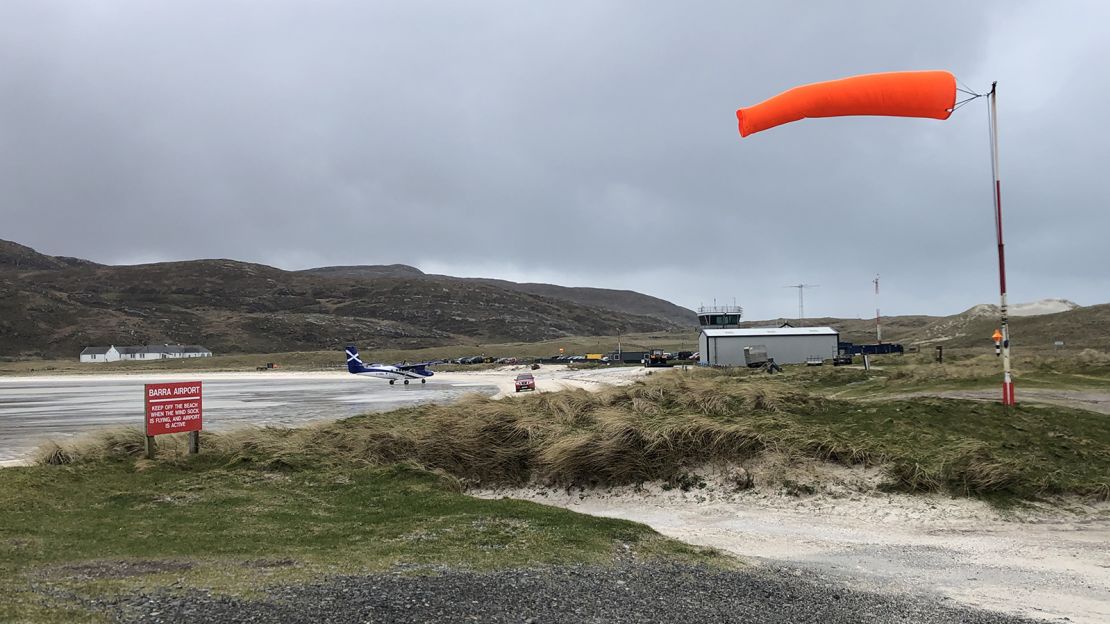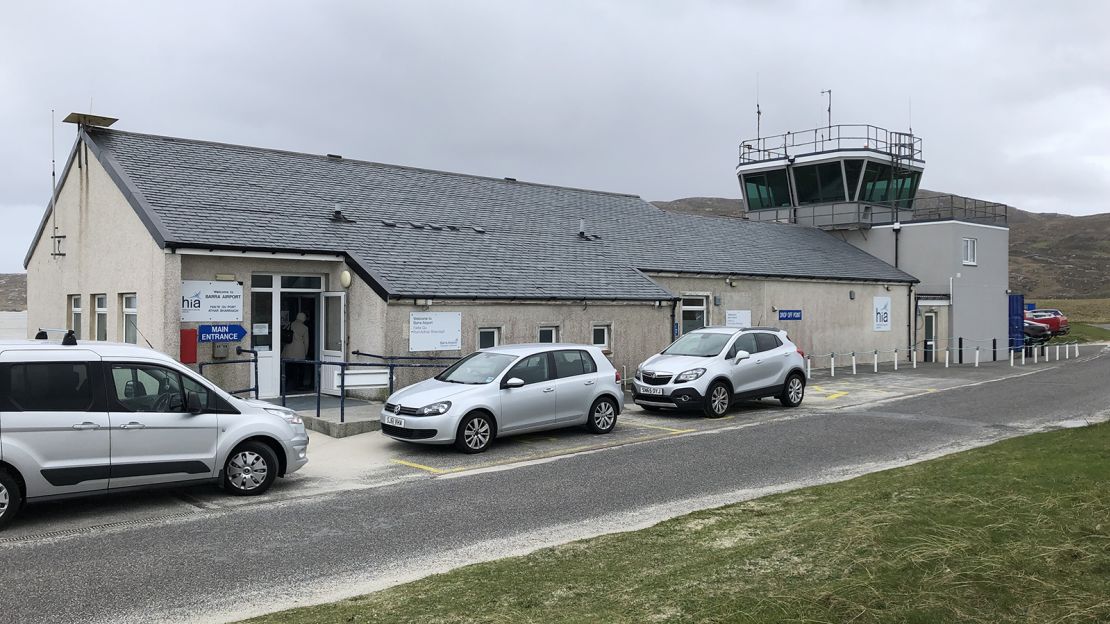Wild and windswept, the Scottish island of Barra lies in the Outer Hebrides, a far outpost of Britain in the North Atlantic.
There are fewer than 1,200 inhabitants here, and the Gaelic language is still widely spoken.
The island is anchored to the rest of the UK by a vital air link to Glasgow. But it’s this scenic 140-mile flight, and the airport it connects to, which draws tourists and aviation enthusiasts from all over.
Barra Airport is the only airport in the world where scheduled flights land on a beach. CNN Travel had a chance to experience it in March 2019, flying the day after Storm Gareth had passed through, causing the cancellation of flights to the island.
As we board Loganair’s tiny aircraft at Glasgow, First Officer Peter Finnie gives us the good news that “the wind has dropped to a mere breeze on Barra – only 27 knots.” At just a notch below seven on the Beaufort scale, which means high winds, it sounds breezy enough.
“There are a few thunderclouds expected on our route, but we’ll steer well clear of them,” he adds.
The Scottish airline runs two flights to Barra a day. On board the 19-seater de Havilland Canada DHC-6 Twin Otter craft, there’s little in the way of a divide between the cockpit and cabin. In fact, the passengers have a perfect view of all that goes on up front.
The compact size also means there’s no attendant to look after us or serve any refreshments, and it’s left to the pilots to offer a brief safety demonstration and a few words about the flight.
‘You’ll love it!’
Of the nine passengers on board, around five of us are traveling just for the experience. The others are islanders returning from business or shopping in Glasgow.
My seatmate, Fiona, in her 50s, is one of the latter. She’s heading home after visiting family and stocking up on items hard to come by on Barra. She notices my camera and tells me, “I take this flight all the time. You’ll love it!”
Glasgow is a busy airport handling everything up to the giant Airbus A380. Our Twin Otter seems tiny in comparison and makes little work of takeoff. We’re soon climbing steeply over the countryside.
With nothing in the way of seatback entertainment, we can instead observe the large GPS screen used by the pilots in the cockpit. Our planned route takes us northwest from Glasgow along the River Clyde, over Loch Awe, the Isle of Mull and across the sea to Barra. Thankfully, there are enough gaps in the clouds to take in and appreciate the scenery in this part of Scotland.

Guided by tides
We begin a gradual descent after an hour. The side window shows nothing but choppy seas, but craning my head to look forward through the cockpit windows reveals a few dark hills emerging from the clouds ahead.
The island we are heading to is just eight miles long and five miles wide. The main town, Castlebay, is little more than a village. With a butcher, post office, café and a few houses huddled around the port, this is where the regular CalMac ferry services arrive.
Near the northern tip of the island an orange windsock stands out against the grassy sand dunes and wide bay of Traigh Mhòr beach. It indicates the other means of getting to Barra for those who want to avoid the sea crossing.
There is no concrete or tarmac here to land on. Instead, the small commuter aircraft make use of the wide expanse of sand as a makeshift runway, timing arrivals with the tides.
It’s no wonder it’s a regular fixture on lists of the world’s most scenic airport landings.
Landing on sand
No cabin announcements are made, and it seems we hadn’t even made any turns to line up for final approach – one of the benefits of landing on a beach.
With the water passing closer and closer to the aircraft wheel outside the window, eventually a firmer-looking surface appears and we make a soft touchdown on the sand, spraying a few puddles of seawater and the occasional tuft of seaweed as we drop speed.
The aircraft pulls up in front of a small building where the beach meets the shore and the engines stop. The passengers’ walk to the terminal isn’t through a jet bridge or even across a solid path, but straight across the sand that we just landed on.

The weather worsens
It’s a gusty day as I venture north on a circuitous path to Eoligarry village, with its stunning views across to other islands and a few lonely houses dotted around the landscape. Back at the airport there’s an excellent café in the small terminal serving lunch.
The weather’s been looking increasingly worse since we landed and the revelation dawns that, having made it here safely, our return isn’t guaranteed. Rain has started to fall.
When asked what happens to flights when the weather’s bad, an airport employee explains that, “Often the pilots will make a few attempts to land in bad weather before diverting back to Glasgow.”
A local resident, Elspeth, and her young daughter are waiting for the afternoon flight to see family in Glasgow. They seem unfazed by the potential cancellation.
“The flight often doesn’t make it when the weather takes a turn for the worst,” she tells me. For islanders, it’s easy to return home and try again the next day, but for day-trippers overnight accommodation could be harder to find at short notice.
Goodbye to Barra
Thankfully, nearly two hours after our scheduled departure time, someone points across the bay and announces, “Lights!”. Our aircraft has found us and is about to touch down.
The boarding process is simple and quick, and as we walk out to the aircraft the beach is now covered in water about an inch deep. The reason aircraft like the Twin Otter are chosen for duties like this lies in their ability to operate in harsh terrain and to lift off in very little space at all.
We taxi quickly out across the bay, and our takeoff roll lasts a mere six seconds, making a right turn back towards Glasgow.
Having a tail wind on our return trip means the aircraft gets us back where our adventure started in a short 50 minutes, slipping in among the large airliners again for a short landing on the huge runway.










